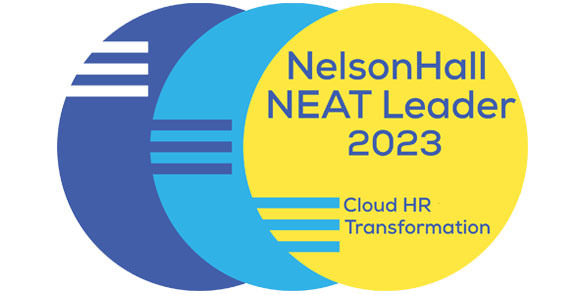Not every human capital management solution will serve all of your needs, so it can be useful to rank your HCM requirements. Start with those that are mandated by law, followed by those that are optional. If you’re a global or multinational organization, you will likely have different HCM requirements than U.S.-based companies. You may also have to consider the priorities of your key stakeholders.

The following are the most common business goals in evolving organizations and the corresponding HCM features, capabilities and technologies that can help achieve them. Use these criteria to evaluate solutions you're exploring or as a resource to build and prioritize your own HCM requirements checklist.
HCM requirement #1 – Increased profit and productivity
An HCM system can increase productivity by streamlining workflows, relieving administrative burden and elevating HR to a more strategic position in your organization.
Look for systems that offer:
- More strategic use of resources
- Automation of any processes you are still performing manually, including data sharing
- Administrative efficiencies that can reduce costs
- Streamlined processes that may increase productivity and drive growth and profitability
HCM requirement #2 – Widespread technology adoption by all users
Employees expect interfaces that mirror the mobile apps they use in everyday life. HCM vendors usually can deliver on this technology.
Look for systems that offer:
- Mobile-enabled, self-service portal for managers, employees and contingent workers
- A simple and engaging hiring process from applicant’s first touch
- Manager tools that streamline workflows
- Single sign-on for HR applications
- A shared source of employee data to reduce redundancy and errors and increase productivity
- Interconnected apps for isolated tasks that integrate easily into the HCM system
- Simplified, mobile-enabled, benefits enrollment
- Financial wellness programs for employees
- Personalized pay options, including pay method (direct deposit, pay card, etc.), pay frequency and access to earned pay in emergencies
- Flexible, adaptable technology
- Artificial intelligence for talent acquisition, HR service delivery, improved personalization, performance management, business intelligence and data analytics
- Chatbot technology
- Workflow automation to increase efficiency
HCM requirement #3 – Support for talent strategy
Not all HCM providers are capable of balancing the needs of both HR and employees. Evaluate whether a vendor can align your talent strategy with your business goals and increase employee engagement.
Look for systems that offer:
- Support for all of your recruitment and hiring tasks
- Easy-to-use onboarding technology
- Compensation package benchmarking
- Candidate sourcing and applicant tracking tools
- Support for hiring, managing and budgeting contingent workers (contractors and 1099 employees)
- Training and career development
- Scheduling and absence management
HCM requirement #4 – Actionable data insights
In an increasingly data-rich world with a growing number of data-literate workers, an HCM system’s ability to yield accurate and actionable insights can set you apart from your competition.
Look for systems that offer:
- A centralized data set for your HCM metrics
- Easy-to-understand data visualization for non-technical audiences
- Configurable analytics for custom insights
- Industry-wide data for benchmarking
- The ability to integrate HCM data with other business metrics
- Predictive analytics that enable modeling and forecasting
- Access to analytics that will help empower decision-making
- Cloud-based data to minimize costs
HCM requirement #5 – Ecosystem connectivity
HCM technology is an aggregate of multiple functions. It can help integrate HR systems, process data, run reports and create a smooth end-user experience.
Look for systems that offer:
- Seamless integration between core systems: payroll, time and labor, benefits administration, HR, and talent management
- Centralized employee records management
- Integrations with other enterprise systems
- APIs to develop your own custom integrations
- Data, workflow and tools that support agile teams
- Simplified reporting accessible to all users
HCM requirement #6 – Compliance support
Whether your business is local, global or somewhere in between, you might need an HCM solution that has built-in compliance capabilities and continually updates to meet regulatory demands.
Look for systems that offer:
- Global and local expertise
- Consistent, reliable updates of regulatory changes
- Payroll and tax compliance, including:
- Easy management of employment taxes
- Tax credit management and strategy
- Wage garnishment management
- Employment verification
- W-2 management
- Health care compliance support to meet the demands of the evolving Affordable Care Act (ACA) landscape
- Unemployment claims administration
- General Data Protection Regulation (GDPR) compliance
- Local experts on legislative changes in all of your company’s geographies
- Real-time alerts and notifications of compliance risk from time and attendance, payroll and benefits systems
HCM requirement #7 – Continuous maximization of your HCM investment
To get the most out of your HCM system, look for a partner that provides service beyond implementation, including a baseline for ongoing improvements and benchmarks to track progress. A provider that regularly enhances products and services, adopts best practices and supports your organization's strategic growth can help you sustain success for years.
Ensure you understand what the HCM provider offers in these key areas:
- The service model and support offered after implementation
- Ongoing product and compliance communication
- 30/60/90-day post-implementation plan
- Internal performance benchmarks across your organization (region, department, business unit, etc.)
- External benchmarks against similar organizations (same industry, geography, etc.)
- Dashboards to showcase performance, analytics to drill into details and alerts to identify potential problem areas
- Tools to measure employee engagement
- Artificial intelligence to interpret and evaluate data and automation to streamline workflows
- Capability to modify processes, business rules and policies in response to changes in strategy or the business environment
- Periodic account reviews with stakeholders to measure performance against business objectives and plan for future needs
- Consultative services to evaluate processes, define best practices and design new approaches
- Access to third-party HCM specialists
- Vendor-led conferences and events for HCM practitioners and leadership to foster networking and share knowledge among peers
Download the HCM Requirements Building Checklist or learn how to ensure your team is aligned in HCM evaluation.
Go deeper
- Article HCM Buyer's Guide



